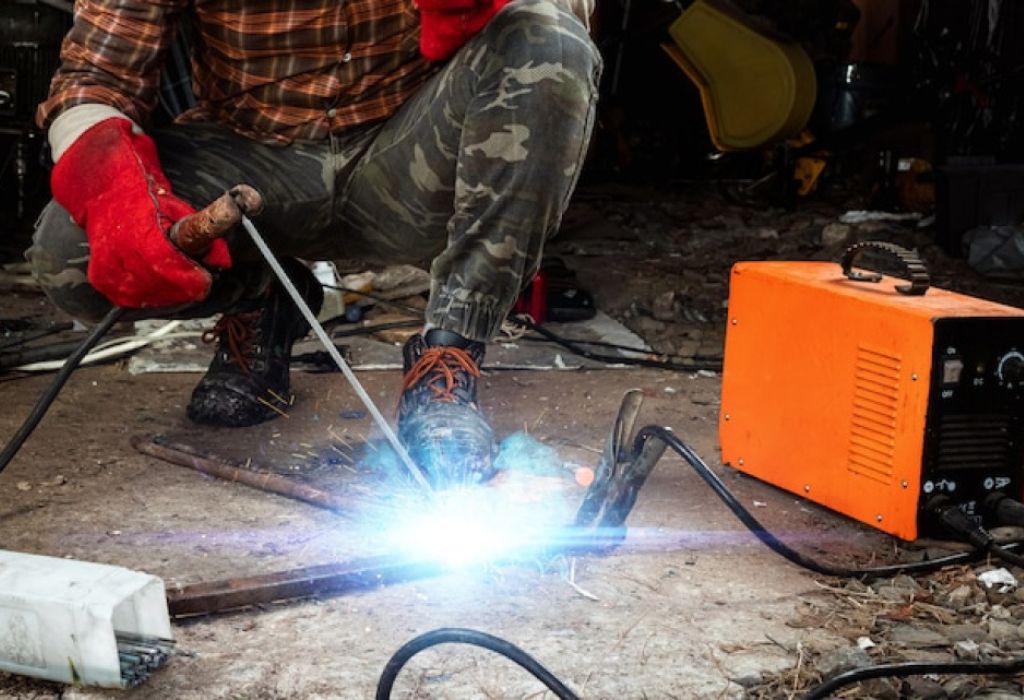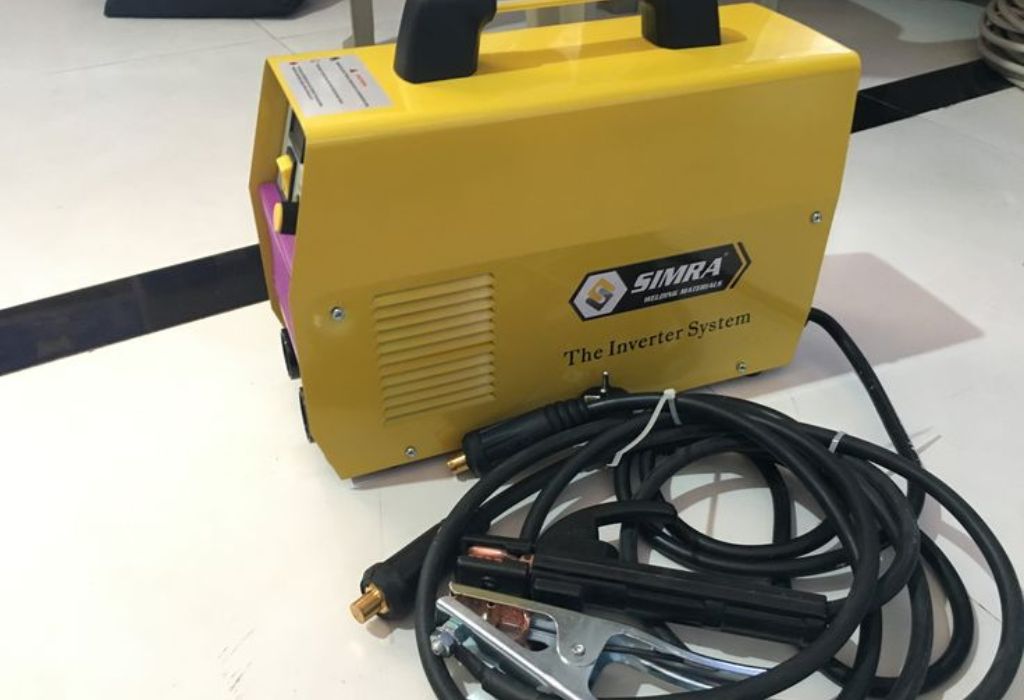The workshop door creaks open, the welder clicks on, and the meter outside goes spinning. A half hour later, the power bill arrives—and the question looms: does a welding machine use a lot of electricity or is this just perception?
Fact is, welding machines draw high instantaneous current during the arc. For example, a 200 A inverter might pull about 20 A at 230 V, which is roughly 4.6 kW. (mig-welding.co.uk)
But consumption is not just about peak draw. The duty cycle dramatically shifts how much power is used over a job. A 60 % duty cycle means 6 minutes arc on, 4 minutes cooling in a 10-minute span. (UTI duty cycle)
Electricity use becomes significant when arc time accumulates across many jobs. In the U.S. alone, annual power consumption by welding operations reaches millions in utility costs. (Lincoln Electric)
Does a Welding Machine Use a Lot of Electricity?

When people ask does a welding machine use a lot of electricity, the honest answer is it depends. The amount of electricity a welder consumes varies with the machine type, output amperage, duty cycle, and efficiency rating.
A light-duty inverter welder used for short repairs may consume very little energy overall. But an industrial MIG or TIG welder running continuously at high amperage can draw several kilowatt-hours per hour of work.
Instantaneous current draw can look intimidating. For example, a 200-amp MIG welder operating at 240 volts may draw about 30 amps—around 7.2 kilowatts during active arc time.
However, because most welders operate below full power and with rest intervals, the average energy cost is lower than it seems.
The real measure isn’t just how powerful a welder is, but how long it’s used and how efficiently it converts electrical input into heat for welding. Inverters typically use power more efficiently than older transformer machines, making them more economical over time.
Understanding what counts as “a lot” requires looking at kilowatt-hours (kWh), not just amps or volts. The key is that electricity cost depends on time-on-arc multiplied by actual draw and power factor.
Does a welding machine use a lot of electricity for small jobs?
No. For short welds or light fabrication, the total kilowatt-hour cost is usually minimal.
Does voltage or amperage affect electricity use more?
Both matter. Power is the product of volts × amps, and both scale total consumption.
Does duty cycle influence power bills?
Yes. Lower duty cycles reduce how long the welder actually draws full power, cutting total energy cost.
Do inverters consume less power than transformers?
Yes. Inverters are typically 10–30% more efficient because they minimize wasted heat and have better power-factor correction.
Is continuous welding more expensive?
Definitely. Long arc-on times drive higher energy costs since power draw stays near maximum for extended periods.
Understanding the Power Math: Watts, kW, and kWh Explained
To truly answer does a welding machine use a lot of electricity, you need to understand how welding power is calculated. Every welder consumes electricity measured in watts (W), kilowatts (kW), and kilowatt-hours (kWh).
A watt represents the rate of energy use, while a kilowatt equals 1,000 watts. When a welder runs for an hour, the total energy consumed becomes kilowatt-hours (kWh)—the same unit used by utility companies for billing.
The basic formula is:
Watts = Volts × Amps
kWh = (Volts × Amps × time in hours) ÷ 1,000
If a welding machine operates at 240 volts and draws 30 amps for one hour, it uses about 7.2 kWh of electricity. At an average energy rate of $0.15 per kWh, that single hour costs roughly $1.08 in power. (Energy.gov).
However, welders rarely run continuously. The duty cycle—typically 40% to 60%—means the welder actually operates for only part of every 10-minute period. That reduces total energy consumption proportionally.
In addition, factors like power factor (PF) and machine efficiency affect how much of that input energy turns into usable welding heat. Inverters often have PF ratings above 0.9, while older transformer welders can drop below 0.7, wasting more energy as heat.
Knowing these figures allows welders to estimate both power draw and cost before striking an arc. It’s the first step toward controlling electricity use without sacrificing weld quality.
What is power factor in welding?
Power factor measures how efficiently a welder converts electrical current into usable power.
Does higher voltage mean higher electricity use?
Yes, but only when current remains constant. Actual consumption depends on both volts and amps together.
How do you calculate welding energy cost?
Multiply volts × amps × hours ÷ 1,000, then multiply by your local electricity rate.
Why do inverter welders save power?
They operate with higher efficiency and power-factor correction, reducing wasted energy.
Does duty cycle affect kWh?
Yes. Lower duty cycles mean less total time drawing full power, cutting total consumption.
Real-World Examples: How Much Electricity Welders Actually Use
To understand if a welding machine uses a lot of electricity, it helps to look at real examples. Different welding processes—MIG, TIG, and Stick—consume power at different rates based on output settings, machine design, and duty cycle.
A MIG welder running at 200 amps and 24 volts draws about 4.8 kW during active welding. If it operates for an hour at a 60% duty cycle, the total consumption is roughly 2.9 kWh, costing about $0.45 at a $0.15 kWh rate. (Miller Electric)
A TIG welder, often used at lower currents for precision work, may consume 2–4 kWh per hour depending on material thickness and amperage. While less power-hungry moment-to-moment, longer welding times increase total energy cost.
A Stick welder (SMAW), which typically operates at higher amperage and lower efficiency, can use up to 5–6 kWh for one hour of continuous operation. Older transformer-based stick machines especially tend to waste energy as heat.
The key takeaway is that electricity cost depends not just on power draw but on how efficiently that energy is used to complete a weld. Shorter arc times and efficient equipment make a far greater difference than simply choosing one process over another.
Which welding process uses the most electricity?
Stick welding generally uses more due to higher current draw and lower efficiency.
Is MIG more energy-efficient than Stick?
Yes. MIG has higher deposition efficiency, completing welds faster and reducing arc-on time.
Does TIG welding use less power overall?
Per minute, yes—but longer weld times can offset the savings.
Can inverter machines reduce electricity use for all types?
Yes. Inverter MIG, TIG, and Stick machines are 20–30% more efficient than traditional transformer models.
How much does it cost to run a welder per hour?
Between $0.30 and $1.50 per hour, depending on process, amperage, and duty cycle.
Inverter vs Transformer Welders: Power Efficiency Matters
When evaluating does a welding machine use a lot of electricity, one major factor is the type of machine you’re using. The difference between inverter and transformer welders can change both power consumption and operating cost.
Transformer welders are the older, heavy-duty models that rely on magnetic coils to step down voltage and deliver high amperage. They’re durable but typically less efficient, converting only about 70–80% of input power into welding energy. (TWI Global)
Inverter welders, on the other hand, use electronic circuitry to convert AC to DC at high frequency, resulting in far better efficiency—often 85–90% or higher. Their design also allows smoother arc control and lighter weight, making them popular for both professionals and DIY users.
Because of this improved efficiency, inverter welders consume significantly less electricity for the same output amperage. Over time, the energy savings can amount to hundreds of dollars, especially for high-volume or daily welding work.
Inverters also feature power factor correction (PFC), ensuring the machine draws current more smoothly from the power supply. This reduces wasted energy, prevents circuit overloads, and stabilizes performance even when voltage fluctuates.
For anyone seeking to reduce energy bills, upgrading to an inverter-based welder is one of the most effective choices available today.
Do inverter welders use less electricity than transformer welders?
Yes. Inverters are 10–20% more efficient due to modern electronics and reduced heat loss.
Does higher efficiency mean lower power bills?
Yes. The same weld quality can be achieved with less total energy use.
What is power factor correction (PFC)?
PFC improves how effectively a welder uses electricity by reducing reactive power loss.
Are transformer welders still useful?
Yes. They’re durable for industrial environments but less energy-efficient than inverters.
Is switching to an inverter worth it for home welding?
Absolutely. Inverters save energy, reduce circuit load, and offer smoother welding performance.
Calculating Welding Electricity Cost Step by Step

To truly understand does a welding machine use a lot of electricity, you must translate amps and volts into real money. Power costs come down to one simple formula:
kWh = (Volts × Amps × Duty Cycle × Power Factor × Hours) ÷ 1,000
Once you find the kWh, multiply it by your local electricity rate to estimate total cost. For example, if a 240-volt MIG welder draws 30 amps with a 60% duty cycle and runs for one hour, the result is roughly 2.6 kWh. At $0.15 per kWh, that equals $0.39 per hour of welding time. (Miller Electric)
Even high-output welders don’t always cost much per project because actual arc-on time is short. A five-minute weld on a small repair may only consume a few cents worth of electricity.
However, production welding or industrial work quickly adds up. A 400-amp welder running at 80% duty cycle for several hours can draw over 10 kWh per hour, costing $1.50 or more per operating hour.
Understanding these numbers helps welders plan jobs efficiently, avoid circuit overloads, and budget for ongoing energy costs.
How do I calculate my welder’s power cost?
Multiply volts × amps × duty cycle × hours ÷ 1,000, then multiply by your electricity rate.
What affects total kWh the most?
Duty cycle and amperage are the biggest drivers of energy consumption.
Does idle time count toward cost?
Only slightly. Most energy is consumed when the arc is active.
Can lower voltage save money?
Sometimes, but if it lengthens arc time, total energy cost may stay the same.
Is welding cheaper with an inverter?
Yes. Inverters reduce both kWh and reactive power loss, lowering total energy bills.
Conclusion
So, does a welding machine use a lot of electricity? The answer depends on factors like amperage, duty cycle, power factor, and how long the arc stays on.
For small DIY projects or occasional repairs, the total energy cost is usually minor—often less than a dollar per hour of welding. Industrial setups, however, can consume much more when operating at high output for long durations.
Machine type makes a major difference. Modern inverter welders with power factor correction deliver the same results as old transformer units while using up to 30% less electricity.
The key to managing energy consumption is understanding your equipment’s specifications and optimizing settings for efficiency. Shorter arc times, proper voltage selection, and steady travel speed all help reduce total kWh.
Electricity use shouldn’t stop you from welding; it should guide you toward smarter, more efficient practices. By tracking actual power draw and choosing energy-efficient machines, welders can maintain top performance while keeping costs under control.

I’m Darrell Julian, the founder, lead writer, and hands-on welding enthusiast behind ArcWeldingPro.com. With more than 15 years of real-world welding experience, I created this platform to share what I’ve learned in the field, in the shop, and in the heat of the arc.


